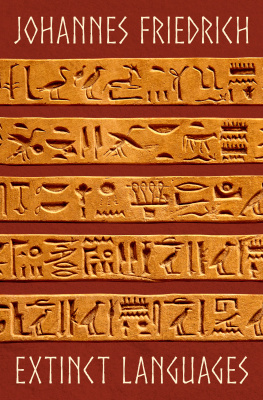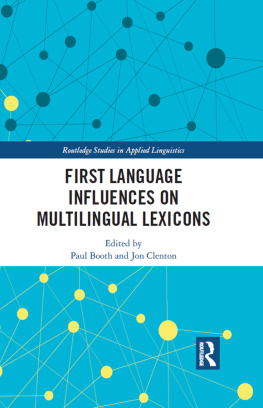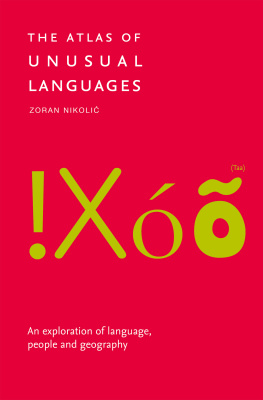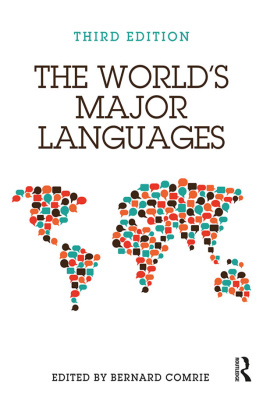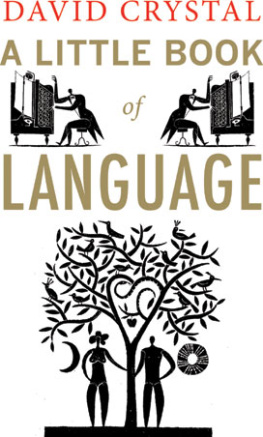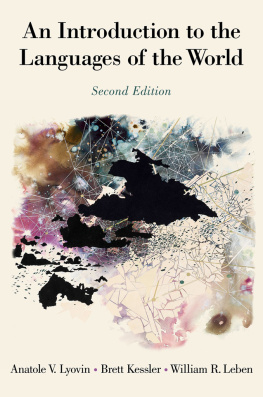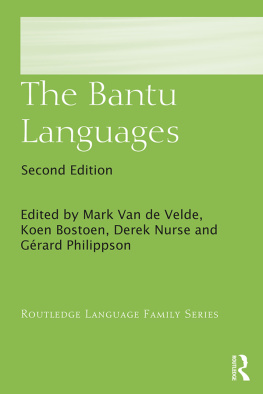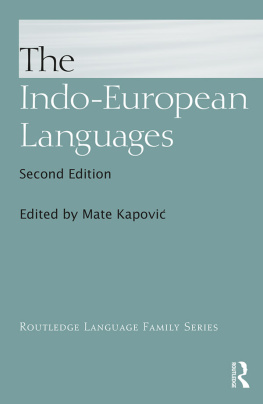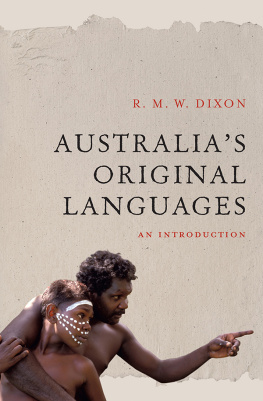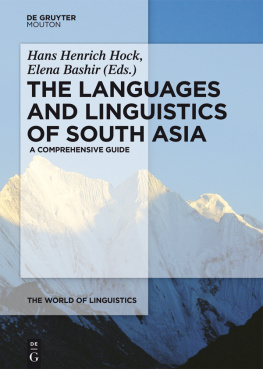TIME MAPS:
EVOLUTION
OF
LANGUAGES
AND WRITINGS
R.K. Fisher
and
Martini Fisher
TIME MAPS: EVOLUTION OF LANGUAGES AND WRITING
Copyright R.K Fisher 2008
Copyright Martini Fisher 2016
First published in 2016
All rights reserved. Without limiting the rights under copyright reserved above, no part of this publication may be reproduced, stored in or introduced into a database and retrieval system or transmitted in any form or any means (electronic, mechanical, photocopying, recording or otherwise) without the prior written permission of both the owner of copyright and the above publishers.
Cover by Roosdy Fisher, 2016
ISBN-13 : 978-1539303664
ISBN-10: 1539303667
Books by the same Authors:
By R.K Fisher and Martini Fisher:
Time Maps
History, Prehistory and Biological Evolution
Australia, Early Sea Voyages and Invasions
By Martini Fisher:
Introduction to Mahabharata: Lessons on Life and Businesses
The Giant Who Loved the Moon
Songs from the Mountain
Wayang: Stories of the Shadow Puppets
The Three Realms
Kings and Giants
TABLE OF CONTENTS
1 EVOLUTION OF LANGUAGES
2 EVOLUTION OF WRITING SYSTEMS
APPENDIX:
BIBLIOGRAPHY
PREVIEW TIME MAPS: MATRIARCHY AND THE GODDESS CULTURE
CHAPTER 1
EVOLUTION OF LANGUAGES
LANGUAGE, HISTORY AND CULTURE
The lexicographer and poet Samuel Johnson (1709-1784) - both a scholar and an artist of language - said, "Languages are the pedigree of nations", and in 1786, two years after Johnson died, Sir William Jones proved it. Jones gave a famous lecture to the Asiatic Society in Calcutta in which he established the concept of language families and showed how most of the languages of Europe and Northern India were related and constituted one family of languages, all descended from one mother language. He then went on to do the same for the Turkic and Semitic families. This was the beginning of comparative or historical linguistics as a science.
The study of languages and the relationships between them can help us understand how people and cultures have influenced each other in the past, and show where migrations and invasions have taken place. It can also help to put approximate or relative dates on developments such as plant domestication or the introduction of a new technology. By means of the words used we know where particular features of culture and technology came from. The words kayak, boomerang, guillotine, samba, spaghetti, sphinx, hula, gladiator, and many others, are so closely associated with the people and cultures that produced them that we can immediately name their place of origin.
TERMINOLOGY
A language is a dialect with an army and navy. (Author unknown)
Linguistically, two languages that have evolved from the same parent language and are mutually intelligible are said to be dialects of each other. If they are not mutually intelligible then they are considered as separate languages. Dialects are usually either social or geographical, the language varying according to social class or location.
An argot is a specialized terminology used by a specific subgroup of the speakers of a language. When such an argot is informal, as it is among teenagers who develop their own terminology in order to avoid parental control and promote group cohesion, it is also called "slang" - which was itself once an argot expression. Thieves also have such an argot or slang, sometimes referred to as "cant". A more formal argot, such as the technical terminology of doctors or scientists is called "jargon" - also originally an argot expression.
Whether something is called a language or a dialect is often a matter of politics rather than linguistics. Arabic as spoken in Irak and Morocco are distinct languages. Bulgaria claims that Macedonia is part of its territory, and part of the reasoning is that Macedonian is a dialect of Bulgarian. Macedonians, however, consider it a separate language. Indonesian and Malaysian are two dialects of the mother language Malayu, which originated on the eastern coast of Sumatra and became a trader's lingua franca throughout the ports of the region. The influences of British colonialism in Malaysia and Dutch colonialism in Indonesia helped split the language into two dialects, but the political needs of nationalism and independence required that they be considered as two languages. Mandarin is the official language of China, and others such as Yue (Cantonese) and Wu are called dialects whereas they are actually quite distinct languages - they are written with the same Chinese characters but the users of each language pronounce the characters differently and can not understand the spoken language of the others. Since politics can play such havoc with science, in order to keep the subject relatively sensible we will ignore the politics completely and consider only linguistic aspects.
If the languages B and C are both derived from language A then they are part of the A family of languages and are said to be daughter languages of A. If D and E are then derived from B then they are part of the B family, and in that case D and E are part of the B branch, or subfamily, of the A family. Languages in the same branch are sometimes called sister languages.
A pidgin is a language that is grammatically based on one language but is strongly influenced by one or more others, especially in vocabulary. Such languages arise due to the need for a lingua franca when two or more languages come into contact, for example, in trading communities. Pidgins initially tend to have simpler sound systems, vocabularies and grammars than the parent languages that they develop from, but if the language survives then such simplicity is soon lost. When the speakers of a pidgin have children and the children grow up speaking the pidgin as their first language, then it is called a creole. Most languages, such as English, were once creoles.
With all of these definitions, we have not said what a language actually is. Usually that is not a problem - we know well enough what we mean by the word - but we have to, at least, try to define it. Here is one attempt - a system of communication between human beings, using a set of agreed symbols, which is capable of representing thoughts and feelings. In speech the symbols are sounds, and in most sign languages they are hand movements. It is sometimes said that mathematics is a language because it is capable of representing almost any thoughts, but it is useless for expressing feelings so it does not satisfy our definition. Similarly music can convey almost any feeling but not thoughts. With this definition, body language doesnt qualify either. (Actually most music conveys only emotion, but the English tradition of bell-ringing may be an exception. Whereas the French play music with their church bells, the English do mathematics permutations and combinations - with theirs.)
THE NATURE OF HUMAN LANGUAGE
Humans and almost all higher animals communicate by some means or another. The methods of communication that we recognize most easily are those that use sound - birds and most land animals with sound through the air, sound through water is used by marine mammals and some fish such as herrings, which emit sounds through the anus (known by the technical term of FaRT - Fast Repetitive Tick [1]), elephants also use seismic waves (sound transmitted through the Earth) by stamping their feet, and some creatures such as bats use ultrasound, above the range of hearing of humans. Ants and many other insects, and some plants too, use chemicals as message carriers, and bees have a combination of visual and tactile methods of communication.


